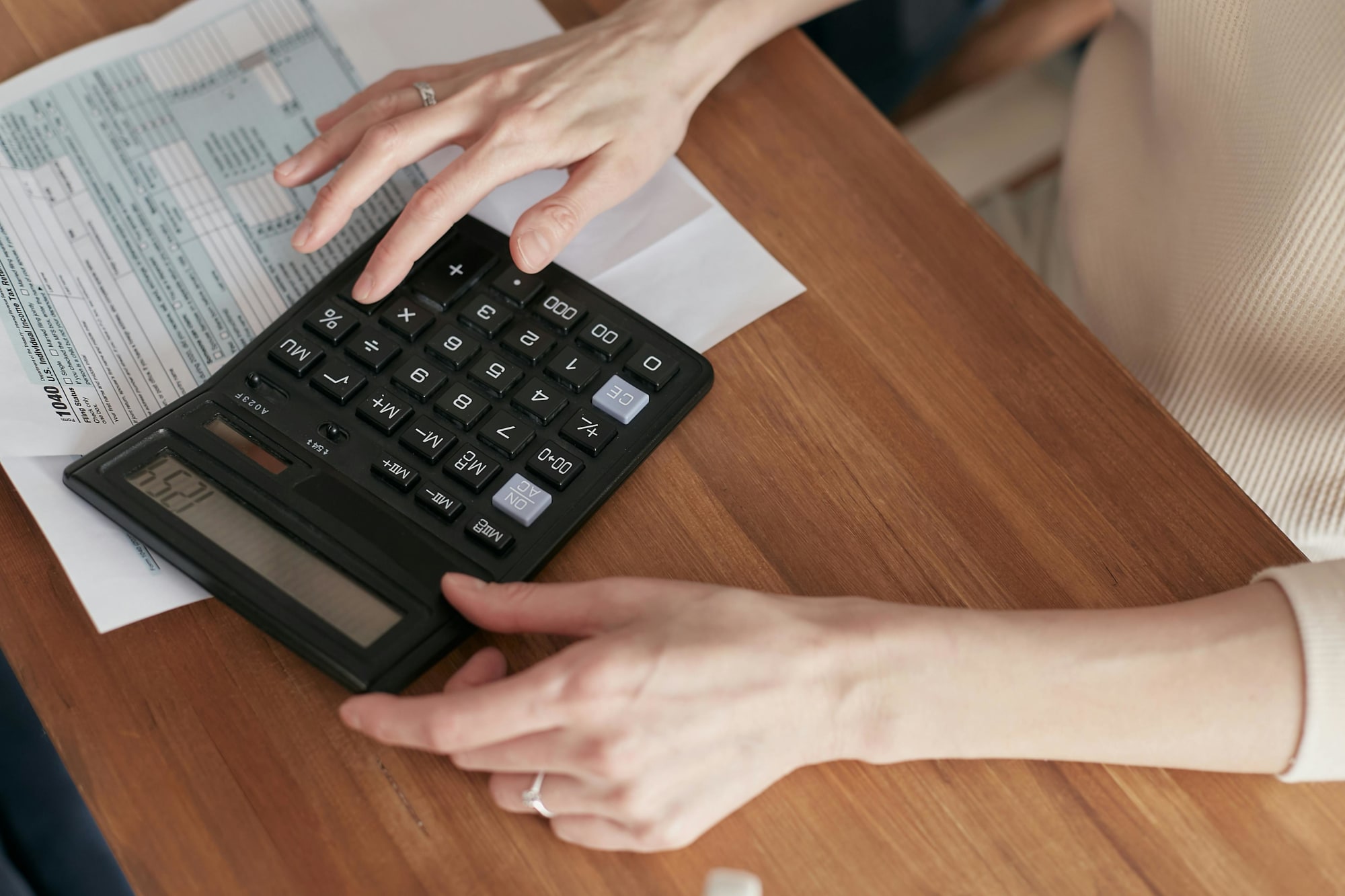Save
Tax-free threshold
All Australian residents for tax purposes are required to lodge their tax return annually and pay tax according to their individual marginal tax rate. However, the Australian Taxation Office (ATO) implements a tax-free threshold to help out lower income individuals and families with the necessary tax file number (TFN) who meet certain conditions.
Tax-free threshold
All Australian residents for tax purposes are required to lodge their tax return annually and pay tax according to their individual marginal tax rate. However, the Australian Taxation Office (ATO) implements a tax-free threshold to help out lower income individuals and families with the necessary tax file number (TFN) who meet certain conditions.

Current tax laws exempt Australian residents for tax purposes from paying tax if their incomes are up to a maximum of $18,200, which is equivalent to $1,517 monthly, $700 fortnightly or $350 weekly.
However the amount stated above can change depending on the taxpayer’s circumstance. Consider the changing conditions below and how the threshold changes accordingly.
Regular conditions
As previously stated, the ATO allows taxpayers to earn up to $18,200 without getting taxed. This threshold applies to all Australian residents for tax purposes regardless of where and how they receive their income.
This includes income from the following:

- Employment
- Government allowances
- income stream benefits from pension
- Insurance payouts
- Investment gains
Employees are typically allowed to claim the tax-free threshold on only one place of employment, but some people are employed by two or more employers. In such cases, they may claim the threshold if and only if their combined incomes from both (or all) places of employment do not exceed $18,200 for the entire fiscal year.
Each $1 in excess of $18,200 and below $37,000 is taxed at 19 per cent.
Special considerations
The $18,200 threshold does not apply to all because some taxpayers are not eligible under the the ATO ruling. Consider the changing thresholds for the type of taxpayers below:
Non-residents for tax purposes and working holiday makers
In the case of non-residents and working holidaymakers, they are taxed at 15 per cent for each $1 they earn up to $37,000.
Newcomers in Australia or emigrants
Individuals who arrived in Australia and became a resident for tax purposes, as well as Australian residents who leave Australia to temporarily or permanently live in another country, may have a tax free threshold less than $18,200.
For both cases, the tax-free threshold is a flat $13,464 plus a prorated amount. This amount is computed against the remaining $4,736 according to the number of months they have been an Australian resident for tax purposes.
For newcomers who became residents for part of the tax year, the formula is:
| Newcomer threshold = $13,464 + [$4,736 x (number of months as a resident for tax purposes ÷ 12] |
For individuals who will reside in another country, the formula is:
| Emigrant threshold = $13,464 + [($4,736 ÷ 12) x number of months as a resident for tax purposes*] |
For emigrants, the number of months as a resident includes the month they leave Australia.
Tax Concessions
Some tax concessions also offer offsets that increase the tax-free threshold of lower-income individuals in effect.
Two of these are more commonly known as LITO and SAPTO.
Low-income tax offset (LITO)
LITO gives a $445 tax offset to individuals who earn up to $37,000 and will deduct $1.5 for each $1 earned between from $37,000 and $66,667.
However, ATO has adjusted the LITO in 2018 to benefit middle-income earners for the next four years until 2022. The new temporary tax concession is called the low and middle income tax offset or LAMITO. Under LAMITO, ATO will allow up to $530 annually for those whose incomes fall below $90,000.
Seniors and pensioners tax offset (SAPTO)
Retirees may be eligible for SAPTO if they have reached Age pension age, which is 65.5 years old in the current tax year.
Eligible seniors and pensioners may receive tax offsets according to their income and civil status. That is:
Single pensioners who earn up to $32,279 can receive a tax offset amounting to $2,230
Couples who earn a combined income of $57,948 are eligible for a $3,204 tax offset
For those who need assistance in settling their taxes, it’s best to contact the ATO or seek advice from a licensed tax professional.
About the author

About the author


Tax saving
$20,000 instant asset write-off extension welcomed, but calls for broader support grow
The Australian government's decision to extend the $20,000 instant asset write-off into the next financial year has been met with approval from business leaders. However, there are growing calls for ...Read more

Tax saving
The downsizer dividend: How targeted tax levers could unlock housing supply in Australia
A call by Raine & Horne to incentivise seniors to move to smaller homes has kicked off a wider policy conversation that reaches well beyond real estate. If designed well, a targeted package could ...Read more

Tax saving
Raine & Horne's bold move could unlock housing supply but what are the hidden risks
Raine & Horne’s call for targeted tax incentives to encourage empty nesters to ‘rightsize’ isn’t just another sector wish list; it’s a potential lever to free up family homes, ease rental ...Read more

Tax saving
From annual check-ups to always‑on: how modern portfolio reviews unlock after‑tax alpha
The era of once‑a‑year portfolio check‑ins is over. Continuous, tech‑enabled reviews now drive returns through tax efficiency, risk control and behavioural discipline—especially in a high‑rate ...Read more

Tax saving
Navigating tax laws for capital gains in 2023
The landscape of Australian tax laws surrounding capital gains is ever-changing, with 2023 being no exception. Read more

Tax saving
What you need to know about the tax implications of crypto
One million Aussies are now invested in crypto, but many have not thought about how these investments will affect them at tax time. Read more

Tax saving
Welfare overhaul could give recipients a leg-up
Australia’s Centrelink recipients who’ve been doing it tough are in for a potentially easier time if the federal government pursues ambitious reforms that could provide sturdier safety nets. Read more

Tax saving
Students should think twice before tapping into their super
Former students might want to think carefully before they look to take advantage of the federal government’s biggest first home buyer incentive. Read more

Tax saving
$20,000 instant asset write-off extension welcomed, but calls for broader support grow
The Australian government's decision to extend the $20,000 instant asset write-off into the next financial year has been met with approval from business leaders. However, there are growing calls for ...Read more

Tax saving
The downsizer dividend: How targeted tax levers could unlock housing supply in Australia
A call by Raine & Horne to incentivise seniors to move to smaller homes has kicked off a wider policy conversation that reaches well beyond real estate. If designed well, a targeted package could ...Read more

Tax saving
Raine & Horne's bold move could unlock housing supply but what are the hidden risks
Raine & Horne’s call for targeted tax incentives to encourage empty nesters to ‘rightsize’ isn’t just another sector wish list; it’s a potential lever to free up family homes, ease rental ...Read more

Tax saving
From annual check-ups to always‑on: how modern portfolio reviews unlock after‑tax alpha
The era of once‑a‑year portfolio check‑ins is over. Continuous, tech‑enabled reviews now drive returns through tax efficiency, risk control and behavioural discipline—especially in a high‑rate ...Read more

Tax saving
Navigating tax laws for capital gains in 2023
The landscape of Australian tax laws surrounding capital gains is ever-changing, with 2023 being no exception. Read more

Tax saving
What you need to know about the tax implications of crypto
One million Aussies are now invested in crypto, but many have not thought about how these investments will affect them at tax time. Read more

Tax saving
Welfare overhaul could give recipients a leg-up
Australia’s Centrelink recipients who’ve been doing it tough are in for a potentially easier time if the federal government pursues ambitious reforms that could provide sturdier safety nets. Read more

Tax saving
Students should think twice before tapping into their super
Former students might want to think carefully before they look to take advantage of the federal government’s biggest first home buyer incentive. Read more













